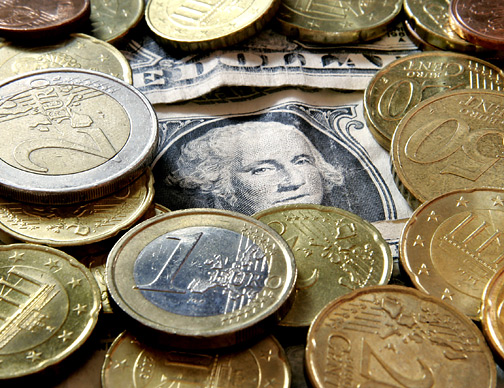
The great conundrum of FX markets over the past year or two has been the resilience of the Euro in the face of all the problems that have engulfed the Eurozone, seemingly threatening its very existence.
We know that European banks have been repatriating money and we know that both legs of Chairman Bernanke’s quantitative easing plus the Twist operation were none too subtle attempts to put downward pressure on the US dollar, yet the Euro’s strength has still been hard to fathom.
That is until very recently.
Except for a couple of brief periods of acute fear, the Euro has been trading 1.25 to 1.50 [against the USD] for the last couple of years. It dipped down to the 1.18 region in May and June of 2010 but then it rallied all the way back to the high 1.47 region around a year ago before beginning its decline to last night’s two-year low at 1.2234.
So what’s behind a Euro slump at a time when ever so slowly Europe seems to be getting its political act into gear? The fact that the economic downturn is rolling past Europe and into emerging markets and the fact that the US economy is also starting to slow are reasons to take the pressure off the Euro. FX pairs are after all bilateral bets and Europe is not alone in the mire.
But why is the Euro lower now than when there was a real and material risk of Greek exit from the Eurozone? Why is it that the Euro now looks set to break wide open and head back toward 1.18 perhaps even 1.16 or 1.11?
It is twofold. Firstly the Spanish problem is a material one – but as the Python can swallow the deer so a united Europe can swallow a Spanish bail out – but comments overnight from Italian Prime Minister Monti that Europe’s third biggest and ‘too big to save’ economy might also need help was a most unhelpful turn of events.
Monti said:
It would be hazardous to say that Italy would never use (this mechanism)…Italy may be interested.
Markets are rightly afraid.
The second and likely more dominant reason is that with the pressure to the downside on the Euro and with rates at zero per cent for deposits and just 0.75 per cent for borrowing banks, traders are now using Euro as a funding currency for more speculative bets. That is they are carrying from the Euro and into other more highly yielding currencies like the Australian dollar.
People are already saying this is not true, at least in the case of the Australian dollar, citing the low level of Australian bonds as a reason that this is so. But even if Australian bonds are super low by historical standards, against the other AAA countries with a stable outlook they still look pretty good, so I don’t buy that argument.
There has also been talk that Euro is being used to fund bets into currencies like the Hungarian florint which may or may not be true but this seems like suicide given the high correlation between the Euro and Florint. But then again that’s the point isn’t it? If the Florint moves in line with the Euro but pays you 8 per cent on your 10 year bond investment it might just be a great trade.
But whatever the case, FX markets know the pressure is on the Euro. They know that European policy makers are only going to get to a sustainable resolution slowly. They know that the ECB is unlikely to reverse policy anytime soon. They know there is only one safe haven in a world assailed by the three horseman of poor global growth: coordinated slowdowns in China, US and Europe – and that is the US dollar.
So for now FX markets also know that carrying from the Euro into other currencies is a pretty easy bet.